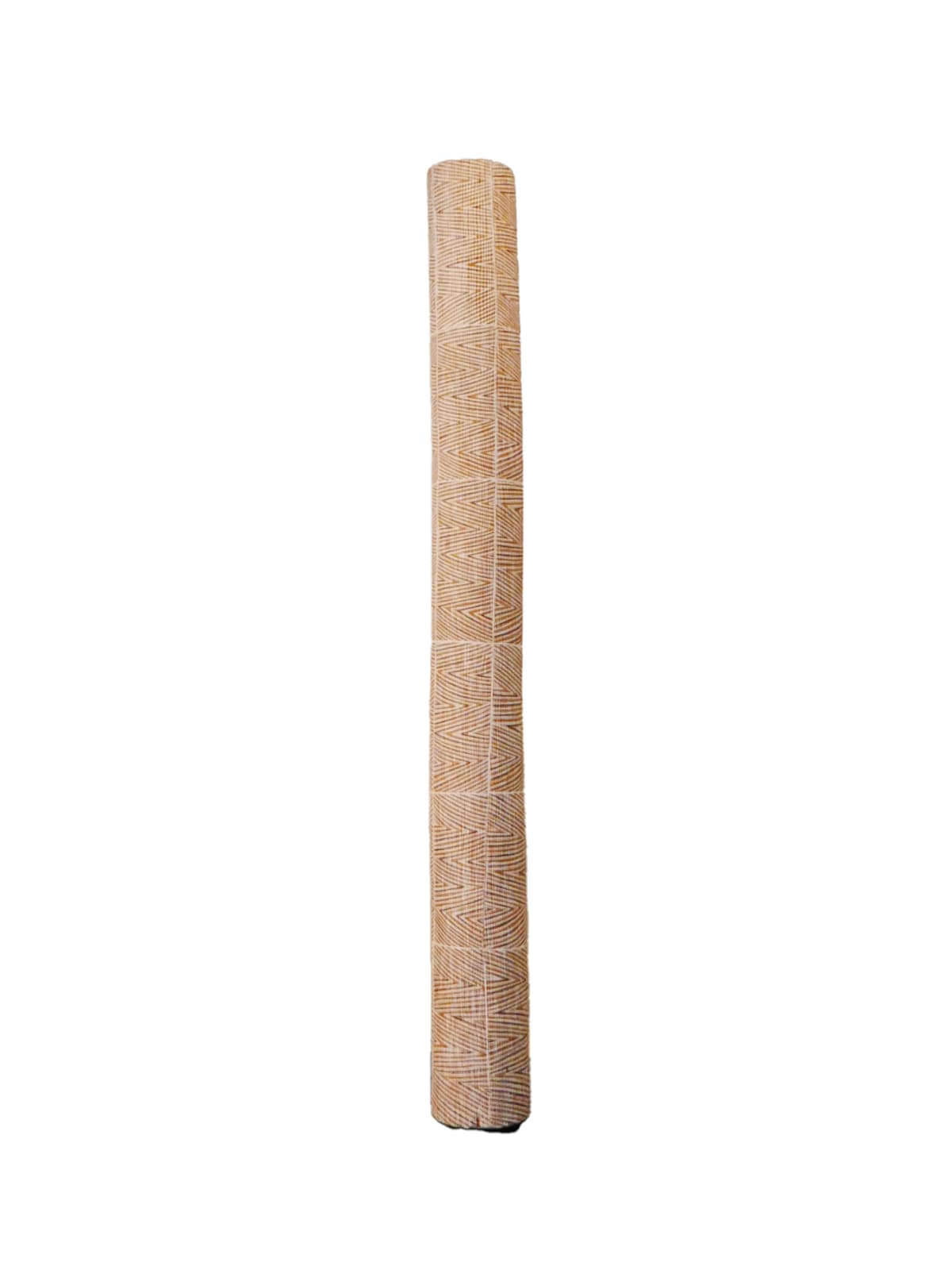Milminyina Dhamarrandji
Dhambaliya, 2022
natural ochres on eucalyptus tetrodonta
141 x 15 cm
55 1/2 x 5 in
55 1/2 x 5 in
This artwork wears Djambarrpuyŋu clan design that refers to Dhambaliya island, off the coast of Nhulunbuy town. Dhambaliya (Bremer island) is divided in to two clan areas, Gutjaŋan for the...
This artwork wears Djambarrpuyŋu clan design that refers to Dhambaliya island, off the coast of Nhulunbuy town. Dhambaliya (Bremer island) is divided in to two clan areas, Gutjaŋan for the Warramirri clan and Ruwak for the Djambarrpuyŋu and Rirratjiŋu clans.
Within the Ruwak area is the ringitj (sacred ceremonial ground) referred to by the 'deep' Djambarrpuyŋu name of Ŋurruyurrdjurr. During ceremony, the men dance in this area with long spears made from mangrove shoots that grow on the island. These spears are named Dhumudal (Djambarrpuyŋu) and Warrarri (Rirratjiŋu). The ceremony refers to Darrpa (the
King Brown snake), Wuwarku (Taipan) and Dhambaḏiny (Death Adder).
After the ceremony these bapi (snakes) move towards the coast, to a point called Rirrawutha, where they 'wash' their teeth in the water, symbolic of a spiritual cleansing. Rirrawutha can been seen from Wirrwawuy (the birthplace of Milminyina) as upstanding rocks on the Western side of Dhambaliya. These rocks also symbolise the snakes mentioned above.
The riŋgitj grounds Ŋurruyurrdjurr are also found on another small island off the coast of Galiwinku. These two places of the same name are sung by the Djambarrpuyŋu and connect through the saltwater Rulyapa (arc shaped miny'tji commonly painted by the Rirratjiŋu) and the spiritual movements of the above mentioned bäpi.
Milminyina noted that the miny'tji (sacred clan design) is similar to the beautiful camouflage of the actual snake.
Within the Ruwak area is the ringitj (sacred ceremonial ground) referred to by the 'deep' Djambarrpuyŋu name of Ŋurruyurrdjurr. During ceremony, the men dance in this area with long spears made from mangrove shoots that grow on the island. These spears are named Dhumudal (Djambarrpuyŋu) and Warrarri (Rirratjiŋu). The ceremony refers to Darrpa (the
King Brown snake), Wuwarku (Taipan) and Dhambaḏiny (Death Adder).
After the ceremony these bapi (snakes) move towards the coast, to a point called Rirrawutha, where they 'wash' their teeth in the water, symbolic of a spiritual cleansing. Rirrawutha can been seen from Wirrwawuy (the birthplace of Milminyina) as upstanding rocks on the Western side of Dhambaliya. These rocks also symbolise the snakes mentioned above.
The riŋgitj grounds Ŋurruyurrdjurr are also found on another small island off the coast of Galiwinku. These two places of the same name are sung by the Djambarrpuyŋu and connect through the saltwater Rulyapa (arc shaped miny'tji commonly painted by the Rirratjiŋu) and the spiritual movements of the above mentioned bäpi.
Milminyina noted that the miny'tji (sacred clan design) is similar to the beautiful camouflage of the actual snake.
1
of
32



